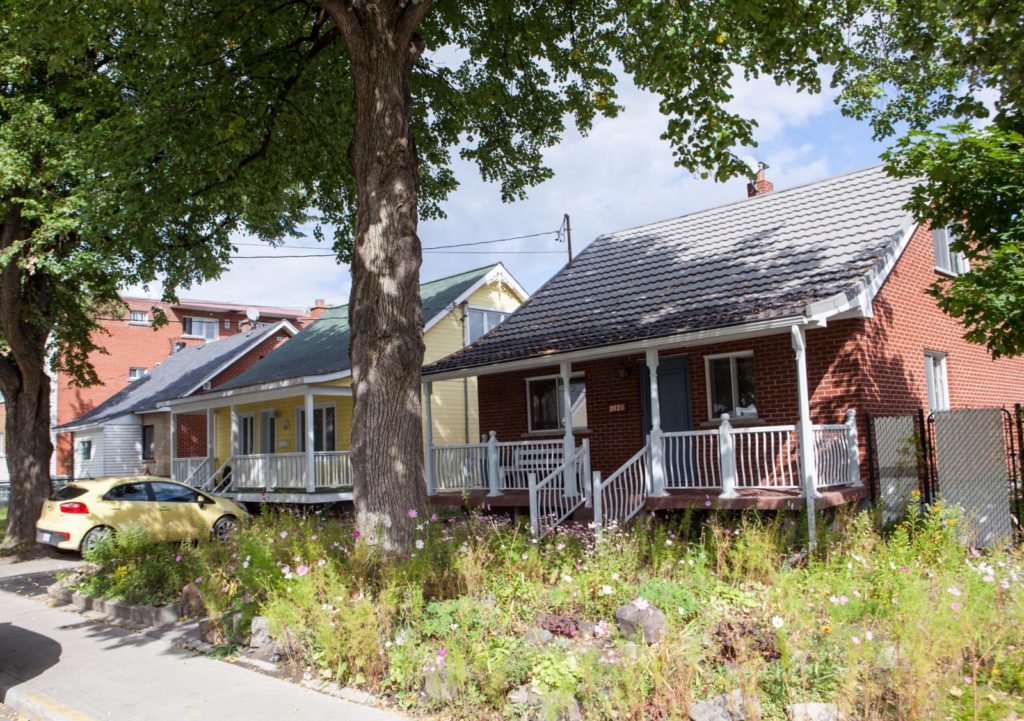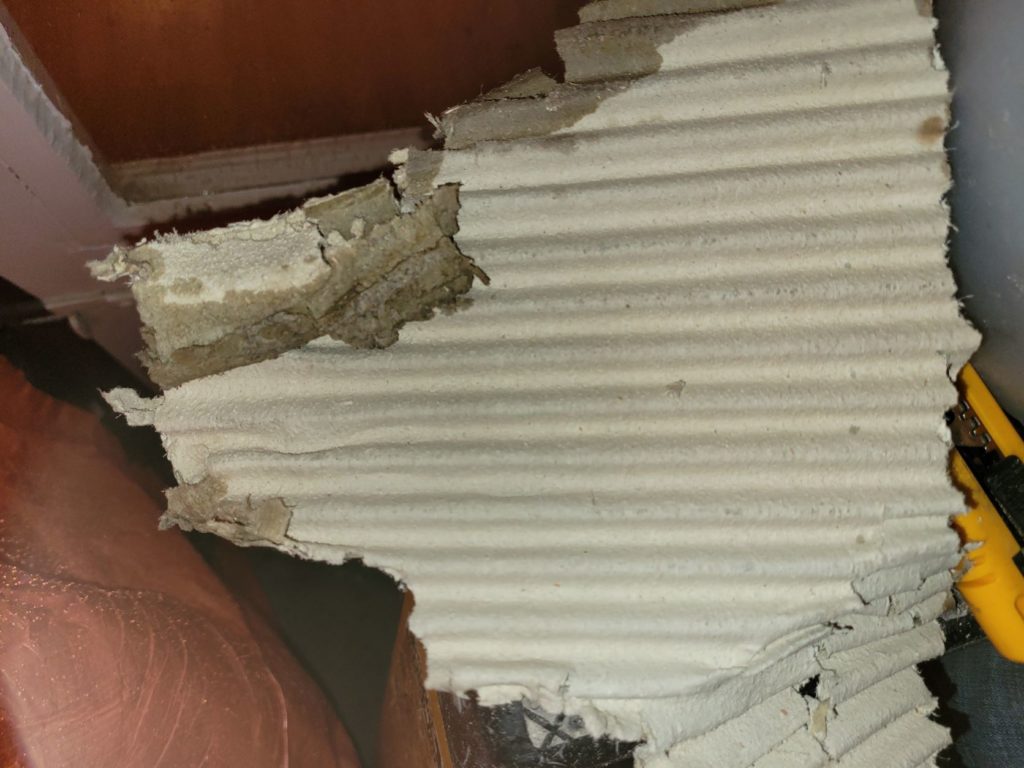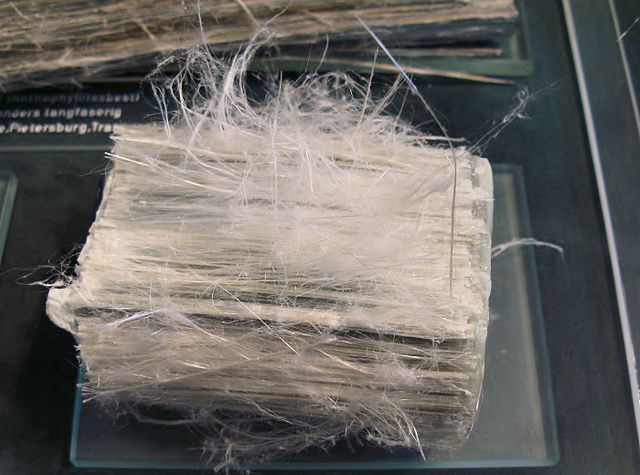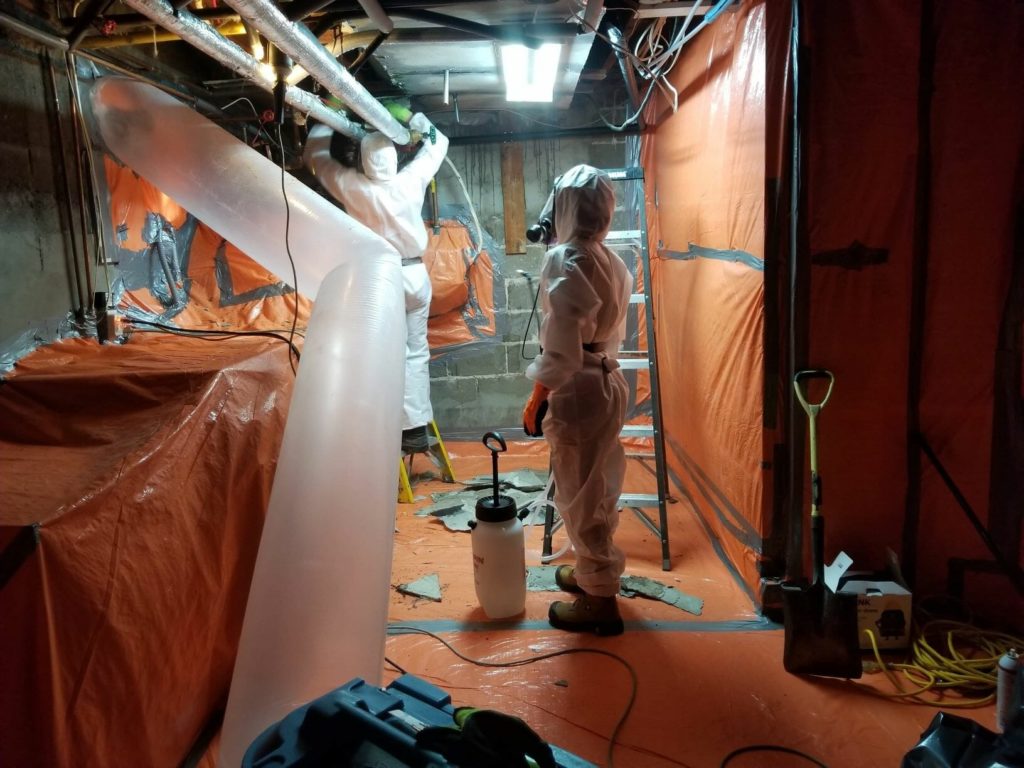Asbestos at home | Questions to ask yourself & how to recognize it
Asbestos at home how to recognize it?
“How to recognize asbestos at home?” -Asbestos is a hazardous material that was widely used in construction before its health risks were fully understood. Identifying the presence of asbestos in a home can be crucial for the safety of its occupants. However, it is important to note that asbestos is not always easy to spot, and most asbestos-containing materials do not pose a hazard until disturbed.
Here are some indications that could help you identify the presence of asbestos in a home:
- Date of Construction: Buildings constructed before the 1980s are more likely to contain asbestos, as it was widely used at that time.
- Common Materials: Asbestos has been used in many building materials, such as drywall, cement board, vinyl tile, insulation, ventilation ducts, pipes, and flooring. However, the only way to confirm the presence of asbestos is through laboratory testing.
- Visual appearance: Some materials containing asbestos have a fibrous or grainy appearance. However, it is difficult to detect asbestos with the naked eye.
- Labeling: Some products containing asbestos may carry a label indicating the presence of asbestos. However, this does not always guarantee that the asbestos is safely encapsulated.
Decontamination service
- Asbestos at home
- Asbestos insulation
- Asbestos panel
- Asbestos ceiling
- Asbestos in walls
- Asbestos floor
If you suspect the presence of asbestos in your home, it is crucial to take precautions and consult qualified professionals to carry out assessments and, if necessary, carry out asbestos remediation in a safe manner that complies with regulatory standards.
How is asbestos detected in the house?
Identifying asbestos in a home usually requires a professional assessment, as asbestos is not always easy to spot with the naked eye. Here are the general steps professionals follow to spot asbestos in a home:
- Visual Inspection: Asbestos management experts perform a thorough visual inspection of the home, carefully examining building materials that may contain asbestos. This includes drywall, cement board, insulation, flooring, pipes, ducts, and other commonly used materials.
- Sampling: To confirm the presence of asbestos, samples of suspected materials are taken. These samples are then sealed in special containers and sent to an accredited laboratory for in-depth analysis.
- Laboratory analysis: Samples are analyzed in the laboratory using specific techniques, such as transmission electron microscopy (TEM) or energy dispersive optical microscopy (MOADE). These techniques make it possible to detect asbestos fibers at minute concentrations.
- Evaluation report: Once the analysis results are obtained, an evaluation report is generated. This report indicates the presence or absence of asbestos, as well as the concentration and type of asbestos identified.
It is important to note that improper handling of asbestos-containing materials can release fibers into the air, increasing health risks. This is why it is strongly recommended to use professionals certified in asbestos management to carry out assessments and sample collection.

Home asbestos test!
In addition to offering you our demolition, asbestos and mold decontamination services, Gestion Xpress Démolition is proud to offer you a sampling service for materials likely to contain asbestos.
To find out more about our sampling service, we invite you to read our page exclusively dedicated to this service.
What are the risk factors for asbestos?
The asbestos risk factor is determined by the type of asbestos, its location, size, shape and color. Risk factors include asbestos releases, type of asbestos, and exposure to asbestos.
Knowing where asbestos is located can help determine risk factors.
How does asbestos affect health?
Asbestos fibers have a sharp end that enters the airways when inhaled.
It is not easy to recognize asbestos in the home, which is why asbestos testing must be carried out by a specialist. It is important to note that asbestos, once detected, must be removed by professionals qualified to handle this hazardous material.

Asbestos house 1920 | 1990 Asbestos in construction materials
In a house built between 1920 and 1990 that has not been renovated, the percentage chance of having asbestos in the walls or other materials is very high.
Fortunately in Quebec we have no longer used asbestos in construction materials since 1990, except mixed with cement or asphalt. But in Montreal and elsewhere in Quebec, thousands of people are still exposed to it, most often without their knowledge.
If your house was built before the 1990s, unfortunately the risk of having plaster walls contaminated with asbestos is very likely. Asbestos can be found in the plaster and in the cement layer which is located before the wooden slats which support the wall. As asbestos is a very popular material due to its strong resistance to heat and fire, it has always been the material of choice.
Homes built between the 1920s and 1990s have a greater likelihood of containing asbestos-containing materials because this period corresponds to widespread use of asbestos in construction. Here are some items in the home that may potentially contain asbestos during this time:
- Insulation: Asbestos was commonly used as thermal insulation in walls, attics and floors.
- Plaster: Some plaster and coating products used in construction may contain asbestos.
- Plasterboard (Placoplâtre): Plasterboard used in walls and ceilings may contain asbestos, especially those produced before the 1980s.
- Flooring: Vinyl tile, carpet, tile adhesive, and some sheet flooring such as linoleum may contain asbestos.
- Roofing: Some roofing materials, such as cement-asbestos roof shingles, may contain asbestos.
- Ducts and pipe insulation: Ventilation ducts and pipe insulation may also contain asbestos.
It is important to note that the mere presence of asbestos in these materials does not necessarily pose a health hazard. Risks arise when these materials are damaged or disturbed, releasing asbestos fibers into the air. Therefore, it is essential to be aware of the potential presence of asbestos and take appropriate precautions when carrying out renovations or work involving these materials.
If you suspect the presence of asbestos in your home, it is recommended that you hire certified asbestos management professionals to perform appropriate assessments and testing. These experts can provide advice on the safe management of asbestos, where appropriate.
What is asbestos?
Asbestos is a collection of six different naturally occurring silicate minerals that have been exploited for their desirable properties. They are very common in mixtures, making them much more dangerous than natural asbestos alone.
The main asbestos minerals are as follows
Chrysotile, which is the most common form of Fibers formed from this mineral can be breathed in and cause serious illnesses such as cancers in the lungs and other parts of the body. The only known use of chrysotile today is in the manufacture of brake linings
Crocidolite, also known as “blue asbestos”, is a calcium and magnesium silicate mineral with a very fine fibrous structure that can be fatal if inhaled or swallowed. It had use limited due to the high risk of developing asbestos-related diseases, but it was commonly used in insulation and fireproofing materials.

Amosite is a brown-gray amphibole mineral. It has been mainly used for insulation materials and friction products such as brake linings, due to its heat resistance
Tremolite is found with chrysotile or actinolite. A rare form called winchite is found near iron mines
- Anthophyllite is an amphibole gemstone that is commonly found with tremolite, actinolite, or asbestiform grunerite.
- Another natural form is called richteriteActinolite is an amphibole mineral that often contains magnesium.

Term designating a mineral with a fibrous texture. Fibers are distinguished into two main groups: Serpentine and amphiboles.
Serpentine:
- Chrysotile is the type most used in the manufacturing sectors.
Amphiboles:
- Crocidolite
- Amosite
- Actinolite.
- Anthophyllite.
- Tremolite.
In Quebec, several mines were exploited from the 1870s. Even today, other mines elsewhere in the world are still in operation.
The last mines in Quebec were closed in 2011.
Friable Asbestos
Very harmful when present as dust, invisible to the naked eye, floating in the surrounding air, so the fibers can be breathed.
A material is considered friable when it is likely to emit fibers under the effect of shock, vibration or air movement. These are materials hazardous to health.
Non-friable asbestos
Refers to a bonded or strongly bonded material, which is not likely to release fibers even under the effect of shock, vibration or air movement.
The term non-friable refers to much more durable materials, they are made of binders such as cement, vinyl or even asphalt.
asbestos in building materials
Asbestos has been widely used in various construction materials due to its insulating, fire-retardant and corrosion-resistant properties. However, due to the serious health risks associated with exposure to asbestos, its use has been heavily regulated in many countries, and in some cases, banned altogether.
In residential, commercial, institutional and industrial construction, this mineral was widely used as insulation, for insulation, as a fire barrier directly mixed with the plaster of the walls, in ceilings, floors, etc.
The products and materials were recognized for their flexibility and durability. They have long been used in construction and renovation since they had great heat resistance and absorbed noise.
Fiber, however, poses health risks. Over time, a person exposed to asbestos fibers risks developing a chronic lung disease such as asbestosis or one of the following cancers: mesothelioma lung, larynx or ovarian cancer. The more the person is exposed to asbestos, the more this risk increases.
In Quebec, the construction industry used products and materials containing asbestos especially between the 1930s and 1990s. It is therefore possible to find it in several places in residential buildings built or renovated at that time.
Vermiculite insulation
Vermiculite does not in itself constitute a health risk. However, some vermiculite insulation contains asbestos fibers, which can cause health problems.
It is Zonolite® Attic Insulation that is causing concern. This insulation was sold in Canada under the name Zonolite®, and the vermiculite it contained came from the Libby mine located in Montana, United States. This mine contained a natural deposit of asbestos, which had the effect of contaminating the vermiculite extracted there.
Vermiculite from the Libby mine has not been on the Canadian market for more than ten years. Not all vermiculite insulation sold in Canada before 1990 contains asbestos fibers. However, if you believe that your home could be insulated with vermiculite, it is reasonable to believe that it may be contaminated.
Vermiculite is an insulation that comes in the form of granules. It was formerly used to insulate the attics of houses.
List of home building materials likely to contain asbestos
- Caulking and glazier putties
- Suspended Ceiling Tiles
- Cement pipes
- Cement facings
- Cement Cladding Board
- Construction putties
- Floor Tiles
- Conduit fitting
- Canvas for electrical wiring
- Electrical panel partitions
- Electrical wiring insulation
- elevator brake shoes
- Elevator Equipment Panels
- Fire doors
- Acoustic plaster
- Adhesives
- Asphalt tiles
- Basic flashing
- Blown insulation (bulk)
- Boiler insulation
- Hot air generator insulation
Asbestos at home | How do I know if my home is contaminated ?
First, determine the year your building or house was built. This mineral was widely used between the 1920s and 1990s. After which environmental protection authorities began to control materials likely to contain it. It is very commonly found in buildings, but also in gas water heaters, in hair dryers and in automobile braking systems.
Pay attention to items that are deteriorating. It is not possible to know if an item contains asbestos just by looking at it. Instead, you need to find warning signs when a material is deteriorating. The material is not dangerous when it is in good condition, but it becomes toxic when it crumbles and its particles spread into the air. Look for items that appear worn or damaged.
You can inspect the pipes, insulation, walls, vinyl tiles, and other materials present in the building since its construction. Look for cracks, dusty areas, and places where materials look like they’re about to crumble or fall apart.
Asbestos danger & precautions.
The diagnosis concerns both buildings intended to be demolished and those in use, in the residential, commercial, industrial and institutional sectors. In the first case, the demolition can project dust into the air that is harmful to health, while in the second case, the health of the occupants of the premises is jeopardized. Additionally, as asbestos was used for its versatility and low cost, it is often found in homes, commercial and industrial buildings.
In floor slabs, asbestos is primarily used for its insulating properties and its ability to resist heat and fire. In addition to the slabs, the mastic injected between the slabs could also contain it.
Spray-textured ceilings were popular from the 1930s to the 1980s because they were an easy way for builders to hide imperfections.
Asbestos is a very good insulator, due to its fibrous structure which allows the asbestos fibers to tightly trap air molecules between them.
The Dangers of Asbestos
There are important health risk factors such as:
- Lung cancer
The average time between exposure and the appearance of cancer is 20 to 30 years. Although lung cancer is generally associated with long-term exposures, studies indicate that workers exposed for one to twelve months were at increased risk of developing lung cancer years later.
Mesothelioma (cancer of the pleura)
Mesothelioma is relatively rare in the general population, but it is often seen in workers and sometimes in their family members or people living with them.
- Asbestosis
Asbestosis is a chronic lung disease characterized by the formation of scar-like tissue in the lungs. This fibrosis reduces the elasticity of the lungs, making it more difficult to breathe. Shortness of breath is the most common symptom. In most cases, one of the physical signs is the presence of crepitations, which can be heard using a stethoscope
Pleural plaques
Pleural plaques are benign fibrous deposits on the pleura caused by exposure. They do not have the potential for malignant degeneration, but are an exposure marker indicating a risk of developing other diseases.
For more information on negative health effects, consult the Health-Canada section
Asbestos at home how to get rid of it?
Asbestos removal, work regulated by the CNESST. Since the early 1980s, the health dangers have been well known.
Our company is specialized and certified to carry out asbestos decontamination work. Visit our page to learn more about decontamination procedures.

F.A.Q.
Frequently Asked Questions About Asbestos and Associated Diseases
How much asbestos is dangerous?
All asbestos fibers are harmful, although crocidolite-type asbestos fibers (also called blue asbestos) are considered the most dangerous. Asbestos fibers are very fine (up to 0.02 µm, or 2,000 times thinner than a human hair) but relatively long (up to 0.02 mm).
When is asbestos dangerous?
When is asbestos dangerous? Asbestos is very harmful when it is present as dust, invisible to the naked eye, floating in the surrounding air, so the asbestos fibers can be breathed in.
Is it dangerous to live in a house with asbestos?
Asbestos presents a health hazard when asbestos fibers are stirred up and become airborne. In other words, asbestos poses a health risk only when fibers are airborne and people breathe them.
How is asbestosis cured?
There is currently no treatment that can cure mesothelioma. But new therapies extend patients’ life expectancy by several months.
How to treat Pleura cancer?
With the exception of a few cancers identified at very localized stages, this tumor remains incurable. Faced with this late-detected cancer, current therapies are based on chemotherapy, radiotherapy and, when possible, surgery.
What is asbestosis?
Asbestosis refers to a very diffuse scar lesion of the lung tissue, due to the inhalation of asbestos dust. Asbestosis causes dyspnea and reduced exercise tolerance. The diagnosis is generally made by chest x-ray and CT scan.
